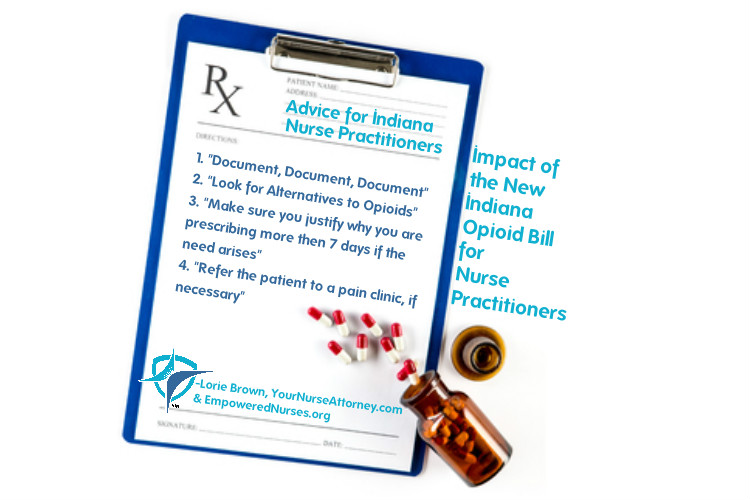The Impact of the New Indiana Opioid Bill for Nurse Practitioners
Hot off the press as of July 1, 2017, SB 226, Indiana’s new amendment concerning prescription opioids is now in effect. The amendment comes amidst the growing national opioid epidemic, by which Indiana has been hit hard. Indiana’s health care costs associated with opioid abuse reached $650 million in 2007, ranking 12th in the nation at the time, and have certainly risen since then. Poisoning has become Indiana’s leading cause of injury death, with drug overdose accounting for the broad majority. I applaud the Indiana legislature for taking action to combat this epidemic.
The amendment does so mainly by limiting prescriptions to a seven-day supply (Sec. 2. (a)), with exceptions for those with cancer, in palliative care, or undergoing medication assisted treatment for a substance abuse disorder (Sec. 2. (b)(1)). Reducing the amount of opioids a person may pick-up at one time will hopefully reduce the incidence of opioid addiction or at the very least limit the amount of overdoses.
There is another exception to the amendment that gives the prescriber, such as a Nurse Practitioner, some leeway that if the prescriber determines that a drug other than an opioid is not appropriate, and wants to prescribe more than the allotted amount in the prescriber’s professional judgment, the prescriber must document in the medical record the indication for the medication and why more is needed. While I am glad the legislature is deferring to professional judgment, I really see no need for the legislation in the first place.
The advice for Indiana Nurse Practitioners is to document, document and document. Look for alternatives to opioids. One Nurse Practitioner referred to not prescribing controlled substances as a clean practice. If you do need to prescribe opioids, make sure you justify why you are prescribing more than 7 days if the need arises. It also may be prudent to refer the patient to a pain clinic, if necessary.
The amendment also gives patients the ability to request a lesser amount of the prescription than prescribed (Sec. 3.), thereby allowing them to further reduce the amount of opioids in his or her possession, along with the chance of addiction or other dangers associated with carrying large amounts of a highly addictive substance. However, I would rather see such a decision made by healthcare professionals.
The underground market for prescription opioids remains the main obstacle to tackling the opioid epidemic. Restricting the supply of opioids should drive up prices in the black market and limit availability, thereby reducing the incidence and cost of overdoses. However, prescription opioids are often gateway drugs to stronger drugs like heroin. Reducing the amount of prescription opioids may have the adverse effect of pushing more addicts to switch to heroin, which carries the additional risks of HIV, hepatitis, infection, and more.
The key to solving the opioid epidemic has nothing to do with opioids themselves. Instead, we should focus our efforts on building strong, fulfilling communities to combat addiction in and of itself. Happier community members won’t turn to drugs for an escape. How do we build these communities? Investing in public works, reducing unemployment, and fostering safe and fair work environments. And for those experiencing actual pain that only opioids can numb, we need to be investing in less addicting pharmaceutical and homeopathic alternatives.
Let me know what your thoughts are on SB 226 and how we can solve the opioid epidemic. You can read the full bill here and explore how the epidemic is affecting your community here.



